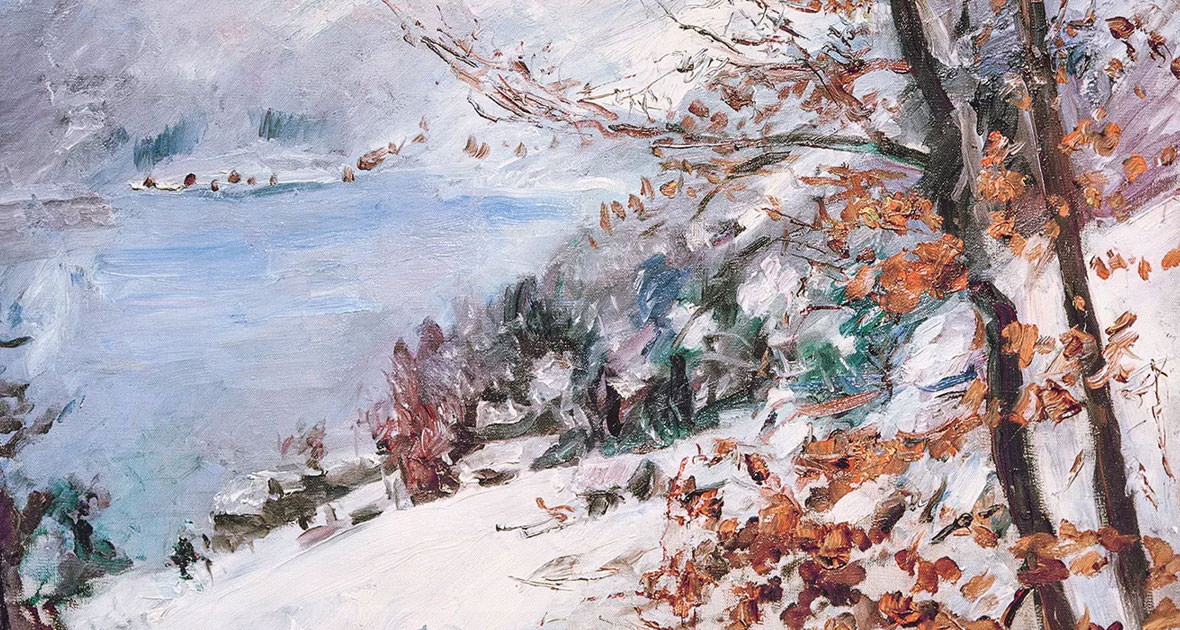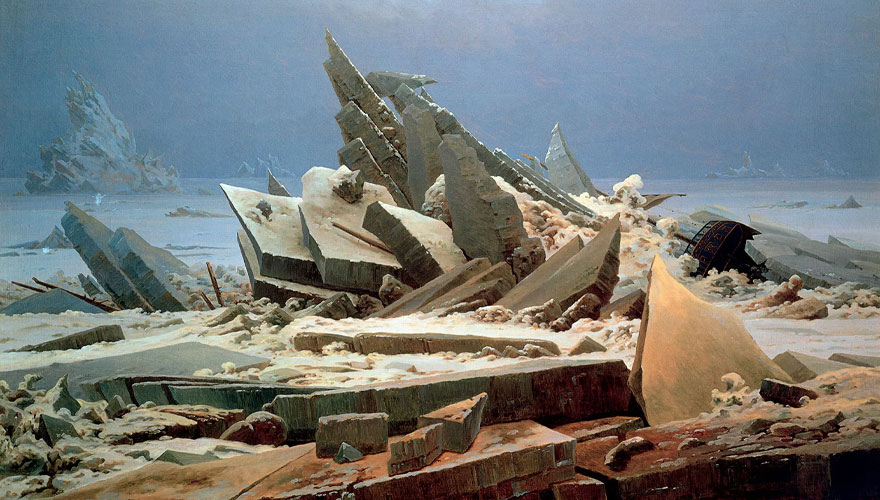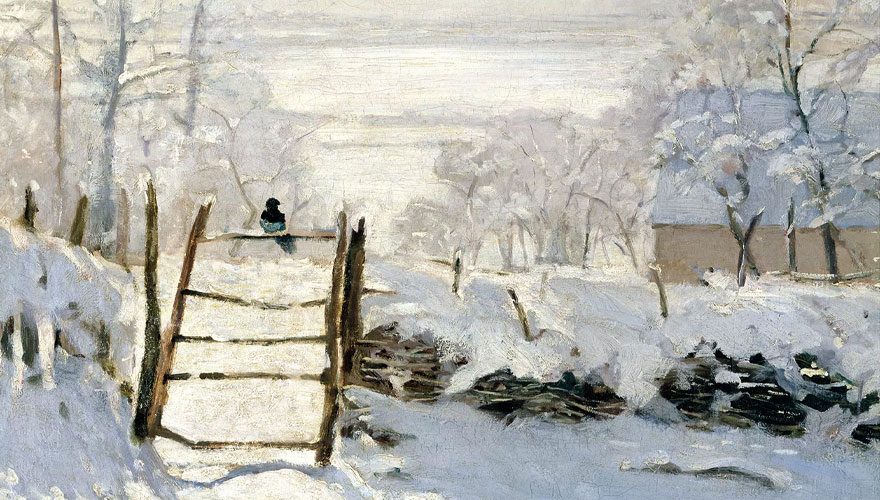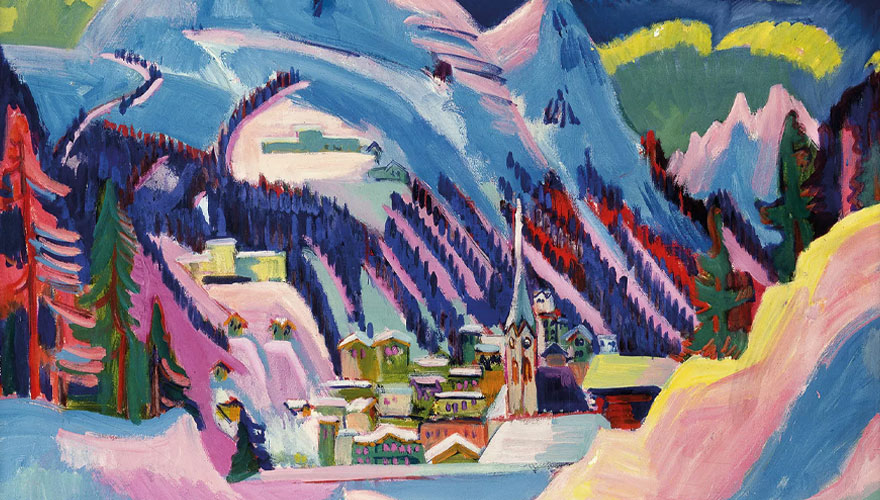
Snow and Ice: Winter Landscapes in Painting
Snow-covered villages, misty forests, frozen lakes, and depictions of people on a winter walk or skating: Winter impressions are among the popular genres in European painting. Artists of the Baroque to contemporary art have devoted themselves to painting snowy landscapes. Each style found its way of expressing the joys of winter. However, winter paintings differ in terms of mood and message as well.
Many paintings of this genre show snowy landscapes in a calm and idyllic atmosphere. Nevertheless, cold, and barren winter scenes often serve as symbols of transience and loneliness, so the mood in the pictures can be rather gloomy and depressing. Whether romantic or sceptical, the winter landscapes vividly illustrate how great an impact this season has had and continues to have on people's lives.
The Winter Landscape Develops Into a Subject in Its Own Right
Landscape painting, and consequently the painting of winter landscapes, only emerged relatively late as a genre in its own right. Until the 15th century, the focus of the paintings was usually still on people. Forests, fields, mountains, or seas merely served as a background or decorated a particular scene.
From the 16th century onwards, painters began to concentrate increasingly on the depiction of nature, whereby, in turn, people often served only as staffage. The painting of winter landscapes experienced its first surge in popularity during this phase. The weather conditions possibly influenced the growing interest in painting winter landscapes. Researchers assume that between approximately 1500 and 1700, there was a "Little Ice Age" in Europe, which may have prompted the painters of those epochs to take up winter as a pictorial theme more frequently.
One of the most famous paintings with a wintry motif dates from this period. In 1565, Pieter Bruegel the Elder painted "The Hunters in the Snow". This painting - as opposed to what the title suggests - does not focus on the hunters but on a snow-covered landscape. The artists of the following epochs, Baroque and Romanticism, increasingly painted landscapes of ice and snow, including Rembrandt van Rijn ("Winter Landscape"), Hendrick Avercamp ("Winter Landscape with Ice Skaters"), Caspar David Friedrich ("The Arctic Sea", "Winter Landscape with Church") and William Turner ("Snowstorm").

During Impressionism, the Winter Landscape Was Further Developed as a Pictorial Theme
During 19th-century Impressionism, the winter landscape had finally established itself as a genre of painting in its own right. The painting of that epoch seemed tailor-made for the depiction of wintry scenes. It focused on the atmosphere of the moment, the play of colours and, above all, the unique lighting conditions, and was thus able to capture winter impressions in a particularly atmospheric way.
The snow serves as a natural soft focus and was thus very much to the liking of the Impressionists, who had abandoned an incredibly detailed depiction of the pictorial objects. Nearly all the significant Impressionist painters also devoted themselves to snow-covered landscapes. Claude Monet himself is said to have painted well over 100 winter landscapes. One of his most important works from this genre is "The Magpie".
But many of his colleagues such as Camille Pissarro ("Boulevard Montmartre on a Winter Morning"), Alfred Sisley ("A Village Street in Winter"), Édouard Manet ("Effet de neige à Petit-Montrouge") or Lovis Corinth ("Walchensee in Winter") also created winter impressions. It is striking that many artists already in this phase moved away from a typical white or light grey depiction of snow and painted it in other shades, such as red or blue.

Expressive Winter Landscapes in Classical Modernism
The winter landscape remained a popular subject in the Expressionist period of Classical Modernism. At the same time, the trend towards an increasingly less realistic depiction of winter landscapes continued. In their paintings, the Expressionist painters took up the effect of the snow reducing the objects to a few schemata and creating strong contrasts - almost like in a woodcut.
In both major schools of Expressionism in Germany, artists then devoted themselves to painting winter landscapes. Among the Dresden "Brücke" artists, it was above all Ernst-Ludwig Kirchner who interpreted winter landscapes in a modern style of colour and form. He moved to Davos in Switzerland in 1917, and from that time on, he painted almost exclusively the mountains, the place and nature - including many winter scenes. His way of depicting snow was particularly striking. Kirchner's colour palette ranged from orange and pink to violet and grey blue, for example, in his paintings "Davos in Winter. Davos in the Snow" or "Winter in Davos".
Other "Brücke" artists such as Karl Schmidt-Rottluff ("Birches in the Snow"), Erich Heckel ("Ore Mountains Landscape in Winter") or Max Pechstein ("Melting Snow") were also inspired by winter. Among the "Blaue Reiter" from the Munich region, the subject of winter landscapes was extremely popular, for example, with Gabriele Münter ("Three Houses in the Snow"), Franz Marc ("Deer in the Snow II") or Wassily Kandinsky ("Winter Study with Mountain"). But many other modern artists such as Edvard Munch ("Avenue in Snowstorm"), Henri Matisse ("Winter Landscape on the Banks of the Seine") or Max Beckmann ("Snowy Landscape Garmisch") also created snowy landscapes. Even Paul Gauguin, who is best known for his impressions from the South Seas, created a "Breton Village in the Snow".

Winter Landscapes From the Mid-20th Century to Contemporary Art
Winter landscapes continued to be a pictorial theme in painting throughout the rest of the 20th century - even though some styles developed in which figurative representation played an increasingly minor role. Especially in Surrealism, Pop Art and all variants of the increasingly popular abstraction, the winter landscapes receded somewhat into the background. However, they never completely disappeared from the studios. At the end of the 1960s, for example, Gerhard Richter created an extensive group of works with snow landscapes, such as "Alpine Landscape in Winter".
Marc Chagall, known for his fantastic and poetic imagery, also created impressions of the cold season. For example, "A Village in Winter" and "Winter", as did Alex Katz ("Winter Scene"), Otto Dix ("Lake Constance, Winter") or Armin Mueller-Stahl ("Winter Landscape"). Right up to the present day, the winter landscape has exerted a great fascination on artists and inspired them to create atmospheric paintings of the cold season.
